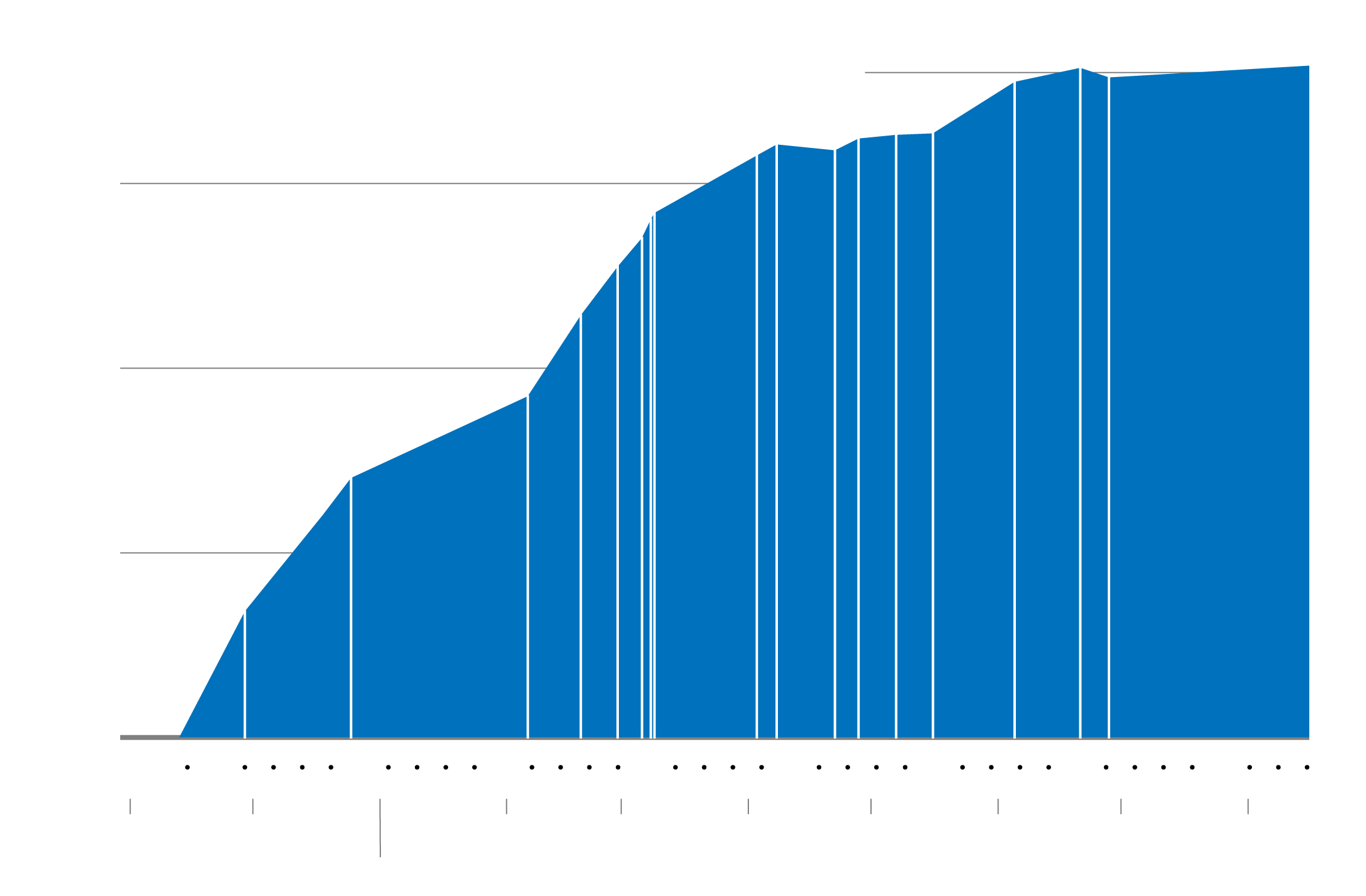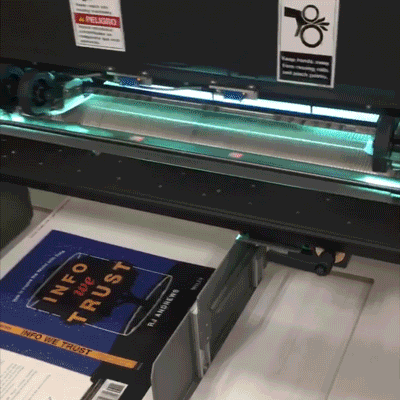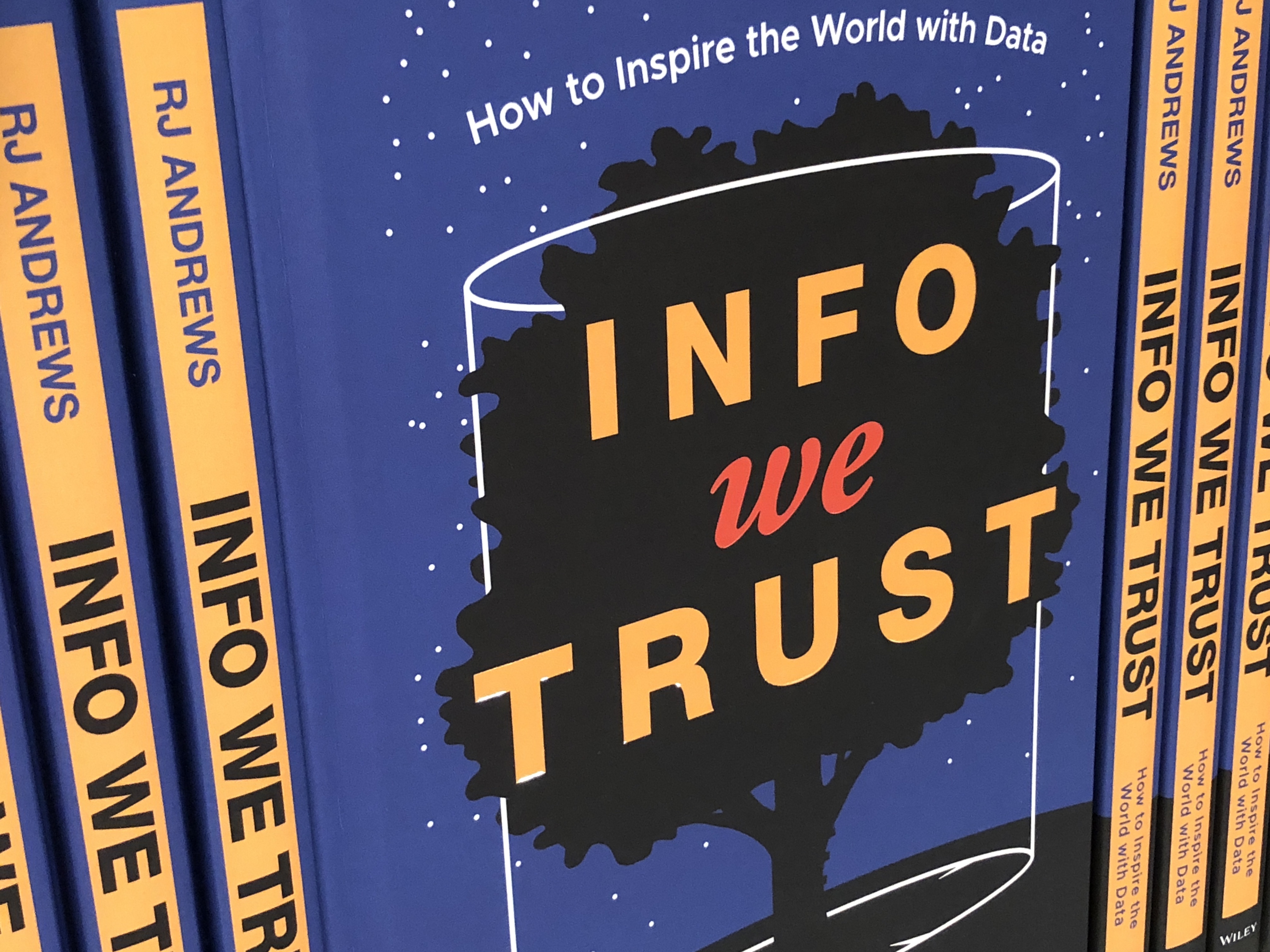Info We Trust was published today. This essay, one in a series about making Info We Trust, is a mildly quantitative reflection on the road from the first pitch (week one, or, ʷ1) to publication (ʷ80).

Week
0
10
20
30
40
50
60
70
80
Pre
Production
Post
Oct
2017
Jan
2019
July
2017
Sep
2018
I'm trying something new with charts and still playing around. For now, iIf the text looks jumbled on your phone, try rotating it.
Pre-Production
I am an independent creative with an inbound marketing strategy. That means that I attract attention by giving away interesting content for free. It is a model rich with uncertainty and surprising moments. I'm lucky that many mornings I wake up to exciting messages. July 2017 gave me one of those days.
July 11, 2017 (ʷ1) was my call to adventure. I received a short e-mail from Bill Falloon, Executive Editor at Wiley: "I’m ramping up the books that Wiley is publishing in the DataViz space, and would love to speak with you about any book ideas you may have...." The quest began.
Bill and I spoke for a month before I submitted a formal book proposal (ʷ4). Across that first month we blended our thoughts about the future of dataViz books. Bill had a stable of successful dataViz titles that included Storytelling With Data and The Big Book of Dashboards. His position was that there should be more books that stretch beyond introductory level content.
As a certified bibliomaniac, I remember painting the dataViz book landscape into three categories: pretty coffee table anthologies, spartan tool-centric textbooks, and general practice books. I agreed with Bill about the opportunity to create something worth reading after you are well-versed in the best practices. There was a chasm between the level of sophistication available across general practice books and the very best data storytelling taking place in the wild. It was my goal to plug that gap as best I could.
With this ambition in mind the concept had the working name of 201, the general practice book you read after 101. But then I pushed for more. A book that had an ambitious technical, human, and narrative agenda could supply something worthwhile for all. Further, weaving machine and poetic would provide access points for any reader. This book could be the first and last book you read about data storytelling. Whatever knowledge you arrive with, you are bound to find new meaning. That was the original ambition.
The finished book sticks remarkably close to the original opening pitch, formally submitted in early August 2017 (ʷ4):
Data storyteller RJ Andrews invites you to a perspective that places the visualization of information at the cutting edge of civilization’s epic awakening to a better understanding of our own reality. Together you will journey through what it takes to decrypt data, find its soul, and make it resonate in a way that will move audiences intellectually and emotionally.
Many details that followed in that proposal, particularly the book's chapter outline, are hilariously distant from what eventually materialized.
Two weeks after submitting the proposal I had a contract in hand (ʷ6). It took some more time to hammer out the details, especially the ownership of the phrase Info We Trust (the name of my website and the title Bill suggested I use for the book) before we were both able to sign (ʷ13). Now it was my responsibility to produce.
Production
I have already written design essays that detail my research ("Modern Classics"), writing ("Writing is Hard"), illustration ("Hand Drawn"), layout ("Multiple Narratives"), and cover design ("Packaging"). In this final pre-publication essay I want to take a more systematic look at when these activities happened.
Writing
I did not track any activity while producing the book. I did not have energy to do anything other than what would help the book become real. I have since looked through my files and done some light forensic analysis to give you a sense of when some of these activities happened across the 80 weeks.
I wrote in Microsoft Word and periodically saved new files. The final word count of these files lets us create a profile of how the manuscript developed. Each white line represents the final word count of a file on its last date modified. The slope represents a steady rise from the previous file. Actual writing happens in energetic spurts that are punctuated by days of research and thinking:

word count
90k
75k
50k
25k
0
week
20
25
30
35
40
45
50
55
Jan
Feb
Mar
Apr
May
Jun
July
Nov
Dec
Aug
2017
2018
Pace slowed in January 2018 (ʷ26) when I figured out the illustrations and layout look. The big file that dominates March (ʷ36) represents the hardest period of writing, and got me to my contractual goal of 80k words. But this was not quite a first full draft. I hung around this word count throughout April (ʷ40) reworking the most challenging concepts, before proceeding through May and June and finishing the draft (ʷ50).
While still in Word I did some systematic editing (e.g. ctrl+F for known filler and fluff words), but most polishing was done outside of word. I printed a lot and edited with red pen. Here's a look at how I made sense of an early version of Chapter 7 ("True Colors"), which I completely restructured into a smoother flow:

I also used a nifty app called Hemingway that highlights phrases that may need attention: passive voice, run-on sentences, instances where simpler words might work just as well. It was an interesting way to take a new look at the text. Most polishing was done directly in InDesign as I saw how the text, illustrations, and composition fit together. Unfortunately I have not been able to recover any meaningful progress from the InDesign files. So our forensic look at the text really sputters out in late June (ʷ51), when I migrated most work away from Word.
Illustrating
Most of the illustration work was planning and digital color correcting. The hinge activity between these was actually executing the hand drawn illustrations with marker and paper. I filled each illustration sheet with as much as possible. This let me try different color variations and batch my color post-processing. Not all of the diagrams from this single illustrated sheet made it into the final book:

By looking at the date each scan originated we can tell when each illustration-sheet was drawn. I always scanned them the day they were drawn to prevent any sheets getting dirty or wrinkled. Remember, these are not counts of illustrations, merely counts of illustration-sheets:

Total illustration-sheets per week
40
20
0
Week
30
35
40
45
50
55
60
65
70
Monday
Tuesday
Wednesday
Thursday
Friday
Saturday
Sunday
Illustration sheets per day: SOME - FEW - MANY - LOTS
Once I figured out the look of the book in January I attacked the illustrations in early February (ʷ30). Then I took a break and just wrote. I restarted illustration with a roar: week 41 produced a whopping 39 separate illustration sheets. A lot of drawing happened on Sundays and Mondays. The yellow tile represents the date of my final approval, showing that I was completing some last illustrations pretty close to the finish line. Illustrating wasn't always a clean process:

Editing
My own editing went into high gear at the end of June 2017 (ʷ51). I left Word behind. At that point I did not silo any activity. Writing, editing, illustrating, and layout were all integrated every day. They all impacted each other as the book materialized out of the ether.
Over a dozen readers helped me edit the book. They included friends and family who do not know the field and expert colleagues. They all lent generous support, helping me see when I was blind to the very quest I was on. Most read only a section of the book, targeting chapters I was struggling with or subjects they had special talents for.
A few readers took on the entire thing. Mara Averick (ʷ53) provided a champion 260 comments on the manuscript only two days after I sent it to her. My editor read the whole manuscript in ʷ59. Howard Wainer provided hand written notes on a printed manuscript in ʷ62.
Looking back, it would have been nice to log more of my production activity so that we could see a little bit more. Change in word count only roughly captures the writing process. It would be nice to know what days I read different books across my research. Capturing editing is really hard. Perhaps a future writing project should capture a simple count of keystrokes per day.
Throughout production, as I marched toward the finish line of manuscript submission, I worked to make the book as good as I could. I was unsure of how much and what kind of value post-production would yield. But I assumed the publisher would contribute a fixed measure of effort and wanted that value to pile on top of the best manuscript I could craft.
Post-Production
I submitted the manuscript to the publisher in ʷ64. This was the first of many steps to being done. It was the most emotionally relieving milestone. Three nights after submission a calm washed over me, as if a weight was lifted for the first time in almost a year. It was time to engage with a team of professionals Wiley constructed to finish the book:

Manufacturing
Director
Executive
Editor
Production
Editor
Assistant
Editor
Copy Editor
Indexer
Publicist
I began talking to the Manufacturing Director in ʷ66. She is the expert on everything related to the real physical book. Across the following two months she gave patient support to my obsessive interest in endpaper and headband colors. She rushed me printed paper samples. We choose the right weight and finish for the book's pages. Together we looked for pages with with too much ink coverage. She recommended we change the original shade of blue to one that only required cyan and magenta ink because dropping the need for yellow ink, from 3-color to 2-color, greatly reduces the chance that colors will fall out of register.
The assistant editor helped coordinate cover design with me and managed the metadata for the book, including the Amazon page. Copyediting was returned to me in ʷ67 with a staggering 1348 comments. I did a quick study of copyediting symbols and went to work. Here is one of the more thoroughly commented page spreads from that file:

It only took a week for me to incorporate the copy edits ʷ68. Next, my Production Editor took the lead. She did her own review of the book, producing yet another commented file for me to review before sending it off for indexing. The Production Editor is responsible for managing everything inside the covers. I most enjoyed our first conversations where we played with what book design traditions could improve the book (e.g. adding an epigraph, which drove me to find the perfect epigraph) and what book design traditions could be abandoned (I have a chapter zero before chapter one, an homage to my technical roots).
Indexing was ready in ʷ71 for me to lay out. The Indexer had the great idea of continuing the black-blue color scheme from the book into the index, differentiating marginalia pages in blue. My last big update, the first complete book, was submitted in ʷ72. The last step was font remediation before my final approval in ʷ74.
The publisher released the file to the printer in ʷ76 where it was processed onto their system and then began rolling off the press:

Today is publication day. We have made it to ʷ80. I am ready to stop telling you about Info We Trust for a while and listen to hear what you think. Right now books are being rushed to data storytelling enthusiasts all over the world. I am so excited for you all to experience Info We Trust.
This is seventh and final "road to publication" essay. Catch up with all of the pre-pub goodies at the book’s main page. They contain everything worth knowing before you read the book (which you can order here). Thank you for everything, I truly appreciate your attention.
Info We Trust (the website) is an award-winning ‘data adventure’ exploring how to better humanize information. Data storyteller RJ Andrews is based in San Francisco and the author of Info We Trust: How to Inspire the World with Data. Please let me know what you think via Twitter @infowetrust or the contact page.

No comments.